“Vapor polishing is the backbone of almost every fabrication industry. It helps increase the product’s transparency and improve overall performance and functionality.”
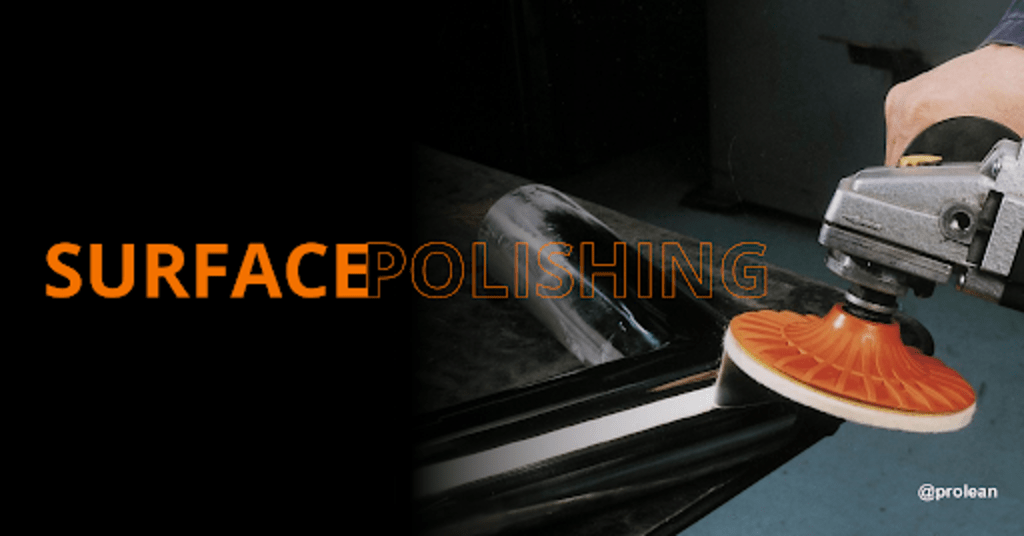
The polishing techniques meticulously enhance the aesthetic nature of fabricated parts by eliminating micro-imperfections and roughness from their surfaces. This technique has gained significance for removing sanding marks, micro scratches, and voids from the interior and exterior parts to make surfaces clearer and higher in gloss to matte. It is one of the fastest and most convenient ways to polish plastic parts or products by imparting high resolution and longevity to the manufactured parts. Further, it is sound for implementing various high-strength and rigid terpolymers, including acrylonitrile butadiene styrene, acrylic, polycarbonate, Ultem, polysulfone, and PEI.
This guide focuses on vapor plastic polishing, its process, benefits, when to employ it, and industrial benefits.
What is Vapor Polishing?
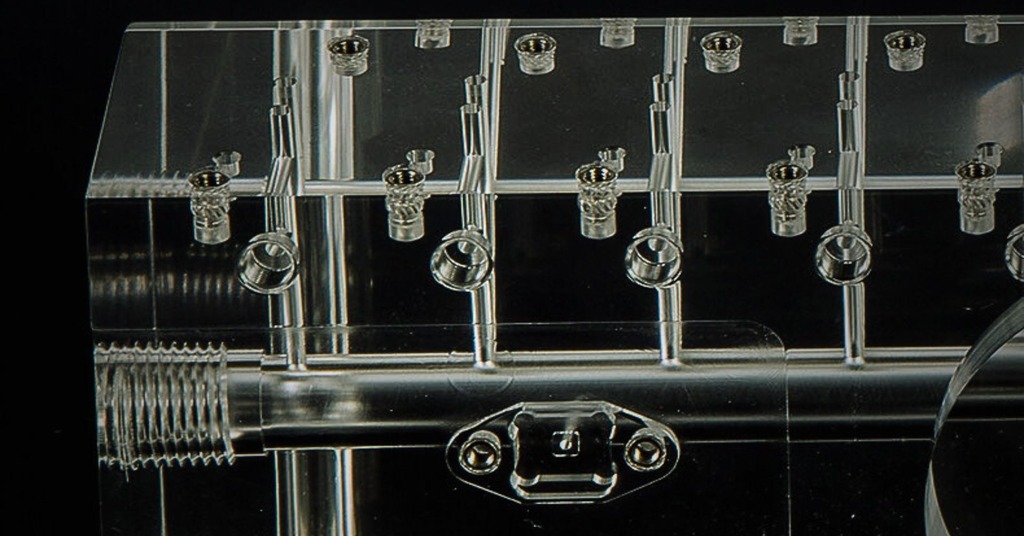
Polycarbonate vapor polishing
Vapor polishing is a fascinating technique for polishing portable plastic products. It involves transforming solvent into a chemical vapor phase through a pressurized air stream onto the intended part surface on a molecular level to refine its aesthetics and maximize clarity. It’s notably considered vital for engineered plastics such as polishing polycarbonate and acetone vapor finishing. In addition, vapor plastic polishing is efficient for small, delicate feature parts to improve their surface finish properties.
Try Prolean Now!
How Does it Vapor Polish Plastic Parts?
In this surface finishing process, a weld-On 4 in its gaseous state is used. Beforehand, the targeted part is sanded through sandpaper of about 1000 to 1500 grit to eliminate the augmented marks and ensure uniform vapor transformation onto the parts’ surface. The weld-On 4 is heated at its melting temperature of 400 degrees Celsius to generate vapors under controlled parameters, including air flows, the solvent used, temperature, and post-finishings. These fundamental factors are primarily responsible for the uniform polishing effect on material surfaces.
These vapors are then sprayed precisely over the fabricated workpiece. The whole process generally requires trained professionals to handle polishing plastic because hazardous chemicals are used. Therefore, preventive measures must be followed to avoid direct exposure to toxic chemicals. After successful layer implementation, parts further undergo post-processes like cleaning to protect them from dust and contaminants.
What Plastic Materials Can Be Vapor-Polished?
The optimal choice of material depends upon various factors such as chemical stability, durability, and many other characteristics. Here are some of the common engineered grade plastics compatible with vapor plastic polishing enlisted below;
Polycarbonates (PC)
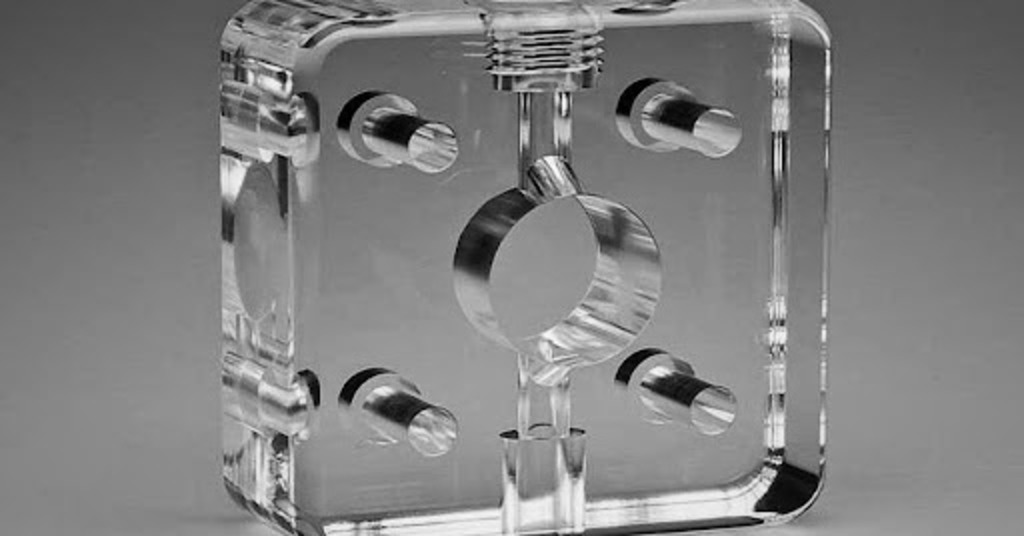
Polycarbonate Vapor Polished Part
Polycarbonates refer to high-performance engineered-grade thermoplastics. They are mechanically strong, rigid, and accommodate high moldability. These polymers belong to the carbonate family and are often easier to fabricate and thermoformed than other thermoplastics. In addition, typically, polycarbonate polishing results in transparent and high matte surface products. A significant amount of methyl ethyl ketone (MEK) is used for lubrication or as a solvent to place polycarbonate into an enclosed chamber or container. The solvent is partially heated to condense the solvent into vapor on the job part surface. To obtain sound gloss to matte or finish, this process can be repeated more than once as per requirement.
Acrylic (PMMA)
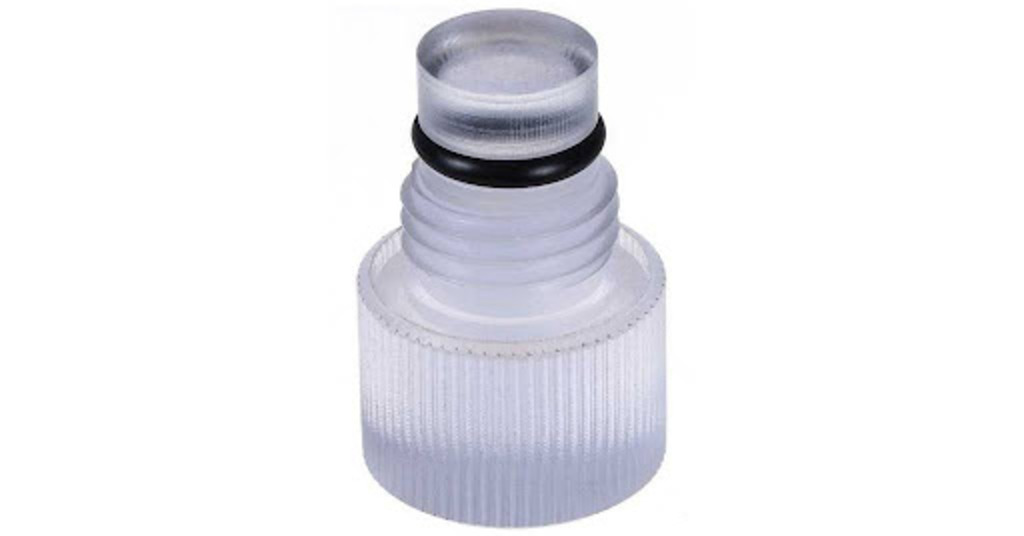
Acrylic vapor polishing
Acrylic is non-crystalline, shatter-resistant, and weightless engineered-grade thermoplastic. It enables manufacturers to fabricate plastic parts with high gloss, and optically clear prototypes. The vapor polishing acrylic usually occurs in an enclosed or sealed chamber. This entails acrylic parts along with solvents like chloroform and dichloromethane. In operation, the solvent is condensed to evaporate on the parts’ surface, resulting in smoother surface finishes. In addition, this cycle can repeat up to multiple times to obtain the required finishing in the end-use product.
Acrylonitrile Butadiene Styrene (ABS)
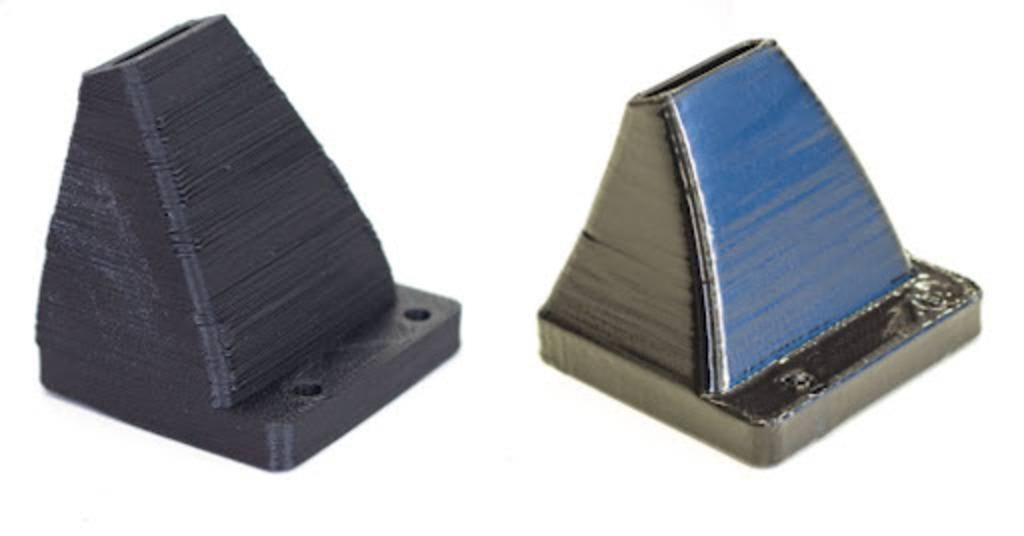
3d printed abs parts vapor-polished
Acrylonitrile butadiene styrene (ABS), is well-esteemed for being an easy-to-fabricate terpolymer. It features impermeable, higher gloss than pure styrene and shiny end-use parts. The stiffness and strength are core characteristics of this engineered-grade thermoplastic. The acrylonitrile butadiene styrene (ABS) polishing is generally employed for fine-tuning functional prototypes. In operation, acetone vapor finishing solvent is condensed to a vapor phase onto manufactured parts, resulting in nearly perfect shining finishes. The time to ABS polishing depends upon certain factors including part size, acetone (solvent) concentration, etc.
Nylon or Polyamide
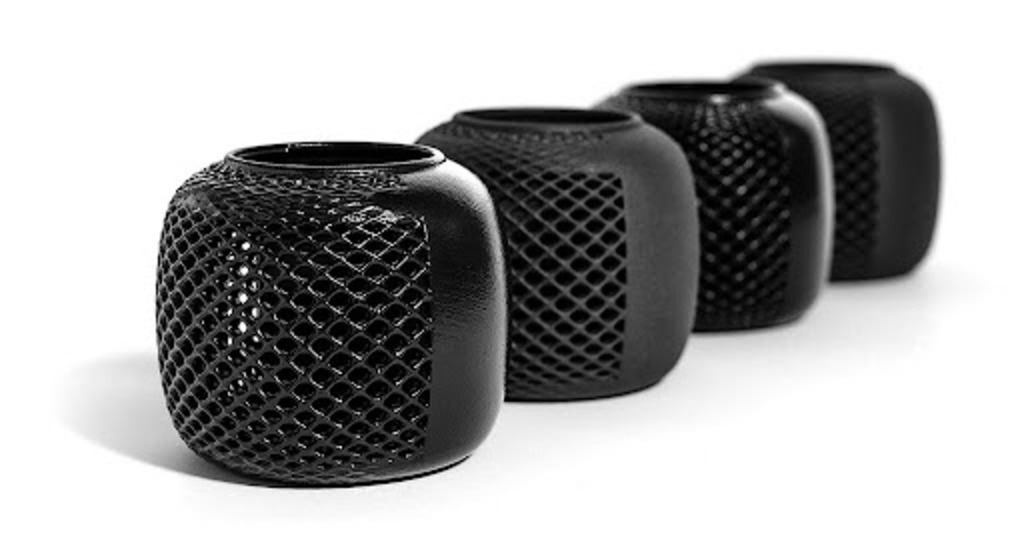
Nylon 3d printed vapor-polished prototype
Nylon plastics or polyamides offer exceptional structural integrity in parts. This distinct feature makes nylon easy to fabricate using a CNC machine. In operation, similar to polishing polycarbonate, solvents like methyl ethyl ketone (MEK), acetone, or ethylene dichloride are employed in an enclosed chamber exposed to condensation and then vaporize over the intended part surface to get an optimally smooth finished product.
Comparing Vapor Polishing To Conventional Polishing
The proper selection of polishing technique is agitating Hassel to some extent due to versatility in materials, aesthetic requirements, finishing shades, and gloss. Let’s evaluate both methods and identify the suitability of each type by knowing the core aspects.
Table: Comparison between vapor & conventional polishing
| Vapor Polishing | Traditional or Manual Polishing |
| Rapid and effective for obtaining consistent shining finishing in machined parts. | Following the conventional approach to polishing plastics. Usually considered a time and labor-intensive, especially for high-resolution demanding parts. |
| It benefits from uniform polish parts entailing delicate features or sophisticated shapes in a few seconds of lead time. | Parts having complicated shapes or intricate features may pose a challenge in terms of obtaining a uniform gloss or matte. |
| It may pose adverse health hazards due to using highly toxic concentrated chemicals. | It’s safer to employ and poses no adverse health risks while operating. |
|
Usually, it’s a cost-effective solution to polishing plastics in bulk volumes because it produces minimal material waste, eventually cutting production expenses. |
It generally requires post-treatment, thus imparting higher costs on product finishing development. |
| Its use is widespread in polishing channels, undercuts, apertures, threads, etc. | Commonly used in polishing wood surfaces, 3D printing & CNC machined plastic and metal parts. |
Try Prolean Now!
Advantages of Vapor Polishing
There are several benefits of employing vapor plastic polishing, such as crystal quality and maximizing functionality in end-use products or parts. Let’s discuss the benefits of in brief detail;
Enhances the Product Aesthetics
Polishing plastic parts efficiently improves the aesthetics of the intended product by imbuing it with visual appeal or optical clarity. Eventually, these enhancements lead to longevity and improve the overall product’s value.
Ideal For Medicare Use Products
Polishing techniques are ideal for improving fluid flow characteristics, especially in sensitive medical parts, including surgical instruments, breathing respirators, and diagnostic equipment. In addition to cleaning effectiveness, refining surface irregularities helps eliminate debris accumulation on critical blood-pumping instruments.
Surface Enhancement Abilities
Despite functional improvements, surface polishing is integral to enhancing the visual appearance of end-user products. It provides parts with a high finish surface gloss and structural integrity by stripping irregularities, roughness, and blunt markings.
Light Transmission Improvements
One of the core advantages of plastic polishing is that it adequately enhances the part’s ability to transmit light without hindrances or obstructions. This precision-oriented feature is valuable for applications requiring smooth light emissions through lenses and light-emitting diodes.
Plastic Polishing Applications In Various Industries
Plastic polishing is a go-to choice for several manufacturing industries, from healthcare to consumer products. Some common sectors that heavily rely on surface polishing are mentioned below;
Food Processing
Plastic polishing is commonly used to smooth and refine the surfaces of food-grade products. It enhances cleanability to increase hygiene and avoid the growth of lethal microorganisms. Moreover, it is integral to improving the aesthetics of the part being polished.
Medical Devices
In the Medicare sector, polishing extensively preserves the life of various medical devices by imbuing a protective layer to smooth out gate areas and surface irregularities. It also helps to avoid debris or dust settlement during medical use by pumping blood to improve patients’ health.
Consumer Goods
Consumer appliances heavily rely on surface polishing because of its peculiar feature of giving smooth matte to gloss. It provides versatile options in terms of colors and textures to enhance visual outlook by reducing contaminations and frictional losses.
Get High Gloss Vapor Polishing at Prolean’s Online Platform
However, vapor polishing offers numerous benefits but requires careful attention to process parts, as this technique is associated with high adverse health effects. At Prolean, we pay careful attention to the details of your project to ensure your parts get the optimal finish, gloss, and optical clarity.
Moreover, our professional engineers honed with over a decade of experience provide post-treatment options from a broader aspect at affordable prices. We care for our valued customers’ needs from production to surface polishing service. Whether you are looking to polish thin detail prototypes for small volumes to bulk orders, proleans’ facility helps you to meet your on-demand needs.
Contact us today and get instant quotes from our engineers!
Try Prolean Now!
Summing Up
Plastic polishing has become a renowned surface-finishing technique across many industries. It provides an economical solution for enhancing a product’s aesthetics, and visuals to make it run for longer use. From sensitive medical devices to home-use products, it has gained significant attention. Although, a few concerns might hinder its utilization regarding precise controlled parameters, and conditions. Despite this, it is heavily employed to improve durability by avoiding surface cracks and dust accumulation on machineable parts.
Further, to process critics, it’s recommended that they consult professionals before initiating polishing projects because the process itself adheres to harmful impacts as it uses highly toxic concentrated chemicals. That can negatively impact respective personals.
FAQs
Q1. Which chemical solvents are used in vapor polishing?
Many chemical solvents partially melt to vaporize on the surface in sealed containers during the polishing process. Some commonly used solvents include; acetone, and methyl ethyl ketone (MEK). Also, polishing chemicals like sulfuric acid, glacial acetic acids, and orthophosphoric acids are used in equal proportions.
Q2. Can Wax be used for polishing applications?
Yes, waxes are used by emulsifying with water, and oils. These are suited to polish wood-made products to enhance their surface gloss and improve aesthetics.
Q3. Can metals be vapor-polished?
Vapor polishing is notably considered an optimal, and effective technique for engineered grade plastics. However, several other techniques are appropriate for metal polishing including; mechanical polishing, buffing, and electrochemical polishing.
Q4. Any alternative to vapor plastic polishing?
Yes, there are other alternatives to plastic polishing. These include abrasive blasting, ultrasonic polishing, polishing, and buffing. Abrasive blasting is employed for metals and ceramics and typically involves abrasive materials for surface improvements.
Q5. Is vapor glossing an expensive technique?
Well, it depends upon the intended application and machined parts. For example, 3D-printed parts contain deep pockets and recesses that can be difficult to polish through traditional techniques and often cost high. Weldon gas is considered cost-effective and can easily be impaled in these deep pockets more efficiently to improve optical clarity.

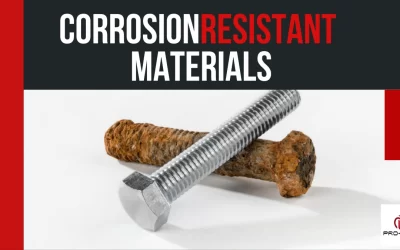
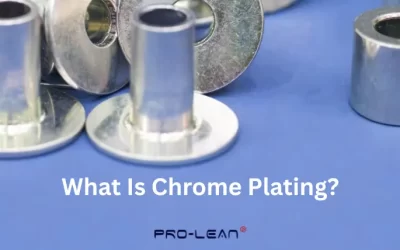
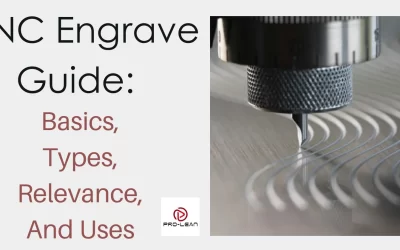
Nice piece of content? Do you think i can replace glass with polished polycarbonate?
Yes! You can replace with polycarbonate as long as the change in physical and mechanical properties due to material change does not affect the functionality and performance of parts.